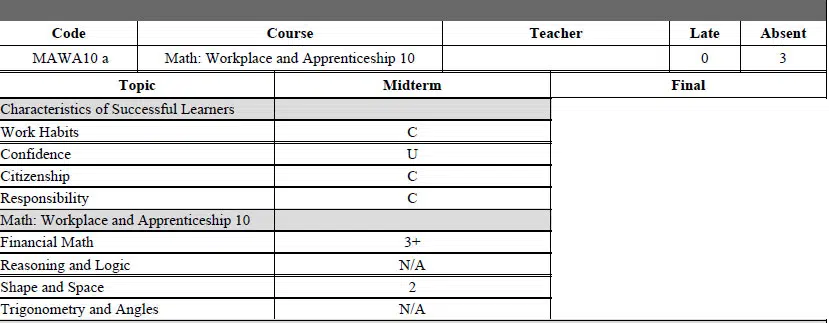
Outcome Based Learning Explained!
Students today live in a quickly changing, highly interactive world. Education has had to change to keep up with the progress of society.
The Saskatchewan Rivers Public School Division recognized this a few years ago and introduced a way of teaching and assessing to help students reach mastery levels of learning. The goal is for students to integrate their academic teachings with high standards of flexibility, teamwork, and problem solving.

Math report card.
For roughly the past decade, students in the Saskatchewan Rivers Public School Division have been taught based on an Outcome Based Learning approach. Report cards now communicate learning based on achievement scales, specific outcome descriptors and Characteristics of Successful Learners for all Kindergarten to grade 9 students. Percentage grades are normally provided for grade 10 to grade 12 students only at the end of a block or semester.





